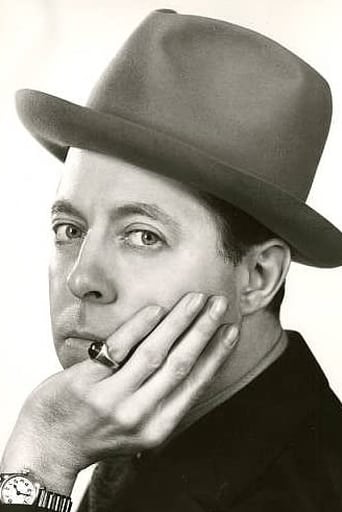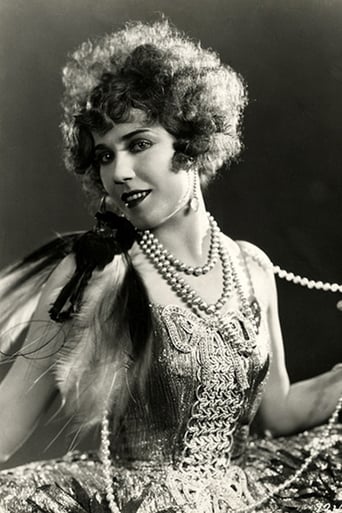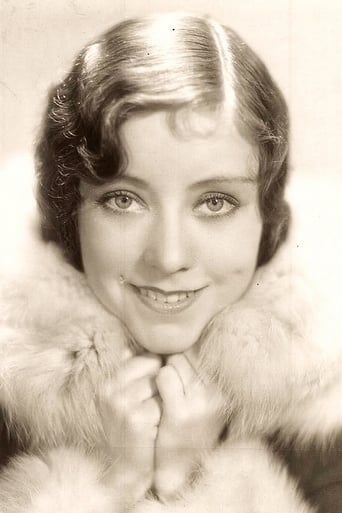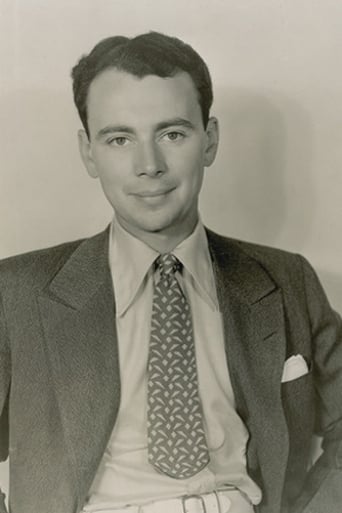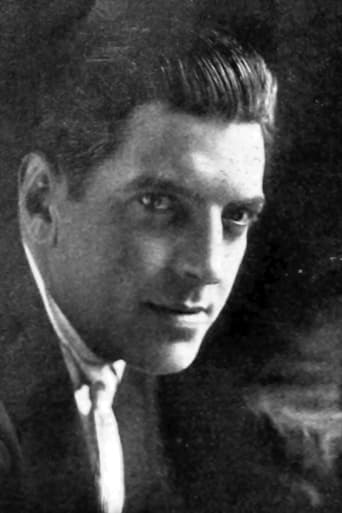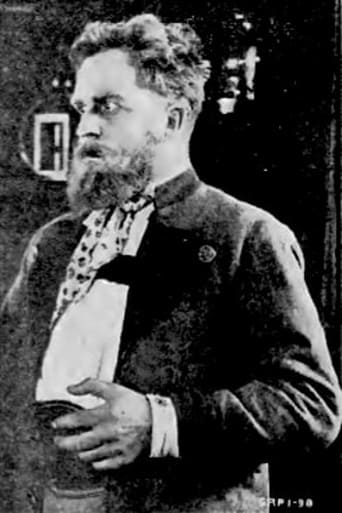Evengyny
Thanks for the memories!
Stometer
Save your money for something good and enjoyable
Odelecol
Pretty good movie overall. First half was nothing special but it got better as it went along.
Billy Ollie
Through painfully honest and emotional moments, the movie becomes irresistibly relatable
alenzizak
Pretty bad film.This is like an exploitation film of the circus. It easily could have been the documentary about life of circus people; that would have been actually pretty impressive, since there are not much documentaries about circus folks, at least not at that time. Errol Morris' Fast, Cheap & Out of Control is almost 70 years later.But I digress. There is not much plot here, it's just circus doing circus in front of the camera. Acting is poor, story is not existent and it's pretty obvious that Capra at that time was the gun for hire and did what studio demanded.There is only one reason to watch this film. If you are on a Capra marathon, e.g. you want to see all the Capra film, go ahead. If you don't seek to accomplish that, just stay away from pre-1933 Capra films. Almost all of them are pretty bad.
CitizenCaine
This oddball film boasts an equally oddball cast. Joe Cook, the famous vaudeville performer, stars as Smiley Johnson, a master huckster/manager/showman for a floundering circus inherited by Mary Rainey, played by Joan Peers. Cook is a one man band as he badgers, cajoles, fast-talks, performs, and generally outshines all the other actors and actresses who appear in this film. The loosely strung together plot merely serves as an entertainment showcase for Cook and his two primary stooges who also have appearances in the film. The actor playing a fool most of the time is Dave Chasen, the man who founded the famous restaurant in Hollywood. The other stooge is Tom Howard who eventually picks up on Cook's hijinks, and works on others in the same manner.One gets the notion there isn't much of a story here besides Cook and company's antics. There's a hilarious bit with a fat lady near the beginning of the film who does reappear later in the film for another one of Cook's barbs, but that's it. Louise Fazenda plays princess, one of the circus performers, and she has a funny bit with Cook when they team up to con Howard into buying a 20% share of the circus. After that, she disappears, and that's what hurts this film for the most part. Characters come and go at will throughout the film with nary a reason.Highlights of the film besides Cook include the circus acts themselves, and the hilarious dinner party sequence (which reminded me of something viewers might see in a W.C. Fields movie). The tea gag, the celery bit, and the spaghetti joke, coupled with Cook's frenetic pace, made for a most amusing dinner party without the actual dinner. Cook shows off again at the end in the big circus finale when chaos erupts due to the sheriff attaching the show's receipts. Cook was a tremendous performer who deserved a place in films, but he only made a few appearances in the 1930's. He was later afflicted with Parkinson's Disease.Frank Capra directed the film, and few of his touches are apparent. There are some great tracking shots under the big top, which Capra was known for, and some really snappy dialog at times. Capra was also fond of the small town flavor present in the film. Jo Swerling and Dorothy Howell co-adapted the film from the play by the later well known character actor: James Gleason. Maurice Marks wrote the book. It's probably not a good example of a Frank Capra film, but it's fast paced, old-fashioned Hollywood entertainment. **1/2 of 4 stars.
theowinthrop
I regret that I have only seen about two fifths of this nice early talky comedy. You can see the scenes I saw on You Tube.But I have seen enough to see that under the jointly able hands of Joe Cook and director Frank Capra we have a first rate comedy. It's also another example of saving those chunks of the past that we thoughtlessly throw aside. In this case the wonderful but brief Broadway career of Joe Cook, comedian extroadinaire.Who he? That's the tragedy of Broadway fame. Unless a filmed account or a kine-scope or video is made of a classic Broadway turn or performance we have little idea of what audiences of (say 1925) enjoyed. That's one more reason to savor films of W.C.Fields or the Marx Brothers or even the few with Bea Lillie. Cook made a handful of films before illness (Parkinson's disease) cut into his abilities. Savor them - he's well worth it.With the Brothers, Fields, Lillie, Bert Lahr, Jimmy Durante, Victor Moore and William Gaxton, Bobby Clark and Paul McCullough, and a handful more, Cook captured Broadway. He was a great acrobatic comic and juggler. Whether a better juggler than Fields I can't say, but Fields never ventured on tight ropes to do the kinds of things that Cook did (and which is in this film, as it is a circus film: look at him on a wire and twirling four metal hoops around his neck, arms, and loose leg. W.C. did not do that, nor Groucho). Like Groucho, Clark, and W.C., Cook could double-talk with the best of them. His spectacular thing was the totally meaningless explanation or anecdote. It works this way - he comes to somebody doing something, and starts going into a long discussion which seems to be heading to some point regarding the activity going on. Then, all of a sudden, the anecdote is finished. Only it has not gotten to anything of use to the hearer. In this film there is a scene where Tom Howard (A.K. Shrewsberry - feed merchant, unsuccessful debt collector, and unwilling partner of Cook's Smiley Johnson) is cleaning his vest from a mustard stain. Cook stumbles on him and sees what he's doing. Suddenly he remembers from his youth how he had cereal (corn flakes) for breakfast, and how he did not use the regular milk but evaporated (canned) milk and sugar. One day...but watch You Tube to see the result of the story and Howard's total incredulity at the end about what he hears and what's it supposed to illustrate.The other two sections of the film on You Tube deal with how Cook (who owes Howard a huge feed bill) double-talks the other one out of his lawful position as creditor. From the start Howard is in trouble, as Cook has him passing out circus fliers, and as he makes a solid, sensible comment on a passing statement. Howard says, "I want to have a conversation with you in private." Cook replies, "That's impossible - we'll be together." Howard is doomed from the start.There is also the best portion of the segments on YOU TUBE of what happens when the unpaid circus performers go on strike after the audience fills the big top. There Cook shows his skills as an acrobat and juggler. You will be deeply impressed. You'll also see a mop top assistant - Cook's partner/stooge Dave Chasen, adding his bits to the sequence. Chasen eventually became famous for his restaurant to the stars (like Romanov's) in Hollywood - also called Chasen.By the way, my mention in the summary line is truly based on what I have read on Cook. I don't know if he ever put it on film before he stopped making movies, but his best remembered stage stunt was to walk out on stage strumming a ukulele, and telling the audience he was going to imitate a four man Hawaiian band performing at once. Two are dancing (he swivels his hips and taps a foot), one is playing the uke, and one is whistling. Then he says, "You may wonder why I am doing this." He launches into a pointless discussion on how he gradually invested his money well, made it into a larger and larger pile, and got about $50,000.00 (in 1925 money). Then he stops and looks at the audience, and says "And if I have $50,000.00 why should I imitate four Hawaiians performing at once!" So he'd stop and walk off the stage, as the audience roared with laughter.I wish more of that work could have been preserved.
F Gwynplaine MacIntyre
In the 1930s, Joe Cook was one of the biggest stars on Broadway, headlining in several hit musical comedies. He co-starred with Ethel Merman in the Broadway show "Fine and Dandy", getting billing equal to Merman's. Joe Cook's talents were amazing: he was a juggler, an acrobat, a song-and-dance man and a comedian who did weird monologues while wiggling his thumbs. Tragically, he succumbed to Parkinson's disease after making only two feature films and a few shorts. "Rain or Shine" is the film version of one of his Broadway musical hits, with all the songs left out ... and it's the best surviving evidence of Cook's astonishing talents. "Rain or Shine" is also an excellent example of Frank Capra's early directorial skill.In this movie, Cook plays the utility man in the Rainey Circus, which gives performances "Rain or Shine" ... except that it's always raining. When most of the circus performers can't go on, Cook becomes virtually a one-man circus, with just a couple of helpers for his acrobatic routines. Joe Cook's chief stooge in this film (and on Broadway) was Dave Chasen, a Harpo-ish comedian who later became famous as the founder of Chasen's Restaurant in Los Angeles. Chasen's schtick was a distinctive hand-waving gesture which many comedians today are still copying.Joe Cook is brilliant in this film. In one scene, he does an astonishing juggling trick with a cigar and a kitchen match that will make you want to rewind several times so you can watch it again ... and again, and again! It looks so simple, yet Cook must have spent hundreds of hours practising this one trick."Rain or Shine" has a lot of broad slapstick humour, most of it hilarious. One scene at a dinner party doesn't work, involving a huge pile of spaghetti. We can clearly see that the "spaghetti" is really twine, which kills the joke. Unfunny comedian Tom Howard plays a grouch named A.K. Shrewsbury, and there's an obscure joke about what an "A.K." he is. (A.K. = "alter kocker", a Yiddish insult.)Among the circus acts in this movie is Ethel Greer, a fat lady who weighed well over 25 stone. I was astonished by the scene in which this huge woman falls out of her circus caravan into a rain puddle. Ethel Greer actually did this stunt herself, because no stuntwoman was large enough to double for her. Kenneth Anger's book "Hollywood Babylon 2" contains a photograph of an immensely fat woman whom Anger unkindly claims is Elizabeth Taylor. She's not, you know: she's Ethel Greer, and the photo in Anger's book is a scene from "Rain or Shine". Also in this movie is a snake charmer, played by silent-film comedienne Louise Fazenda in a rare sound-film appearance. (Fazenda married producer Hal Wallis and retired.)Some bad news: the dignified African-American actor Clarence Muse appears in this film, playing one of the "Yassah, boss" roles that Frank Capra kept lumbering him with. In Capra's autobiography, he refers to Muse as his "pet actor". No comment. SPOILER WARNING: At this film's climax, the circus tent catches fire. There's an exciting sequence as Cook and all the circus hands try to put out the flames. Ironically, the only time it STOPS raining on the circus in "Rain or Shine" is when the tent is on fire and the rain would have done some good. As soon as the fire is out, the rain starts pouring down again. "Rain or Shine" is must-see viewing! My rating: 10 out of 10, since Joe Cook's brilliant talents more than compensate for any of this film's flaws.
